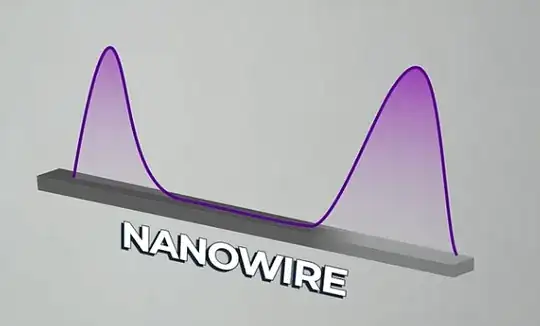In classical physics the evolution of a measurable quantity, like the $x$ position of a particle, is described by a function $x(t)$ so that if you measure $x$ at time $t$ you get the value $x(t)$.
In quantum physics a measurable quantity is described by a more complicated mathematical object that can be represented by a matrix:
https://math.libretexts.org/Bookshelves/Linear_Algebra/A_First_Course_in_Linear_Algebra_(Kuttler)/07%3A_Spectral_Theory/7.01%3A_Eigenvalues_and_Eigenvectors_of_a_Matrix
The possible results of a measurement are the eigenvalues of that matrix. Quantum theory predicts the probability of each of those possible results. The probability for a result can vary from 0 to 1. If you want to understand this better you can read a quantum mechanics textbook such as "Introduction to quantum mechanics" by Griffiths and Schroeter.
All that has to happen for a bunch of atoms to be in a row is for that result to have a probability of 1 or some good approximation to 1.
How could that happen? When you do an experiment in which quantum effects are important in general what happens to all of the possible outcomes contributes to the probabilities of the possible results. This is called quantum interference. For an example see Section 2 of this paper
https://arxiv.org/abs/math/9911150
The particular kind of experiment conducted by Microsoft is more complicated than the one depicted in the above paper but nothing about quantum theory prohibits arranging atoms in a row. You can read about the theory and the experiments behind Microsoft's chip in the papers below
https://arxiv.org/abs/0707.1889
https://arxiv.org/abs/2401.09549
